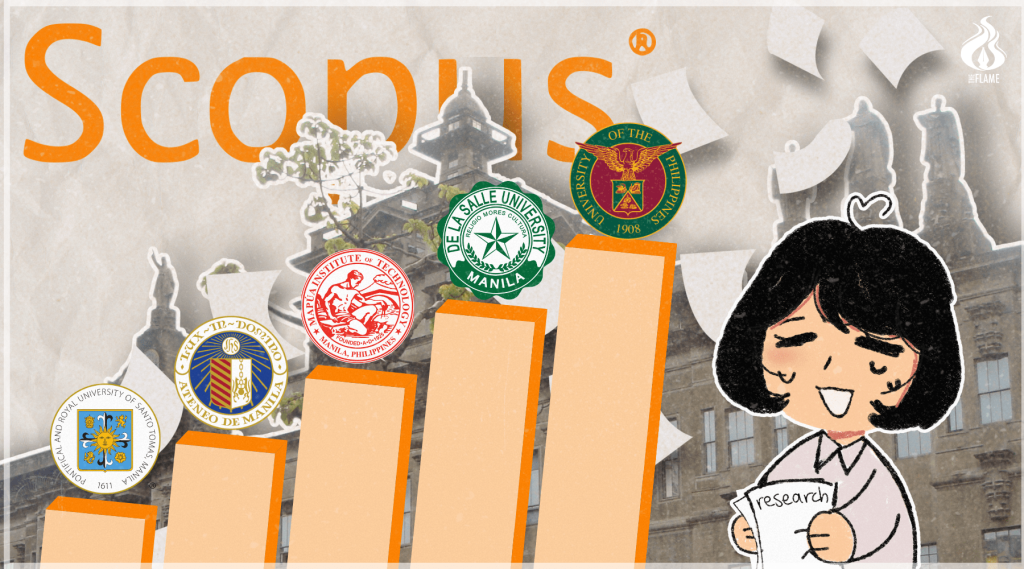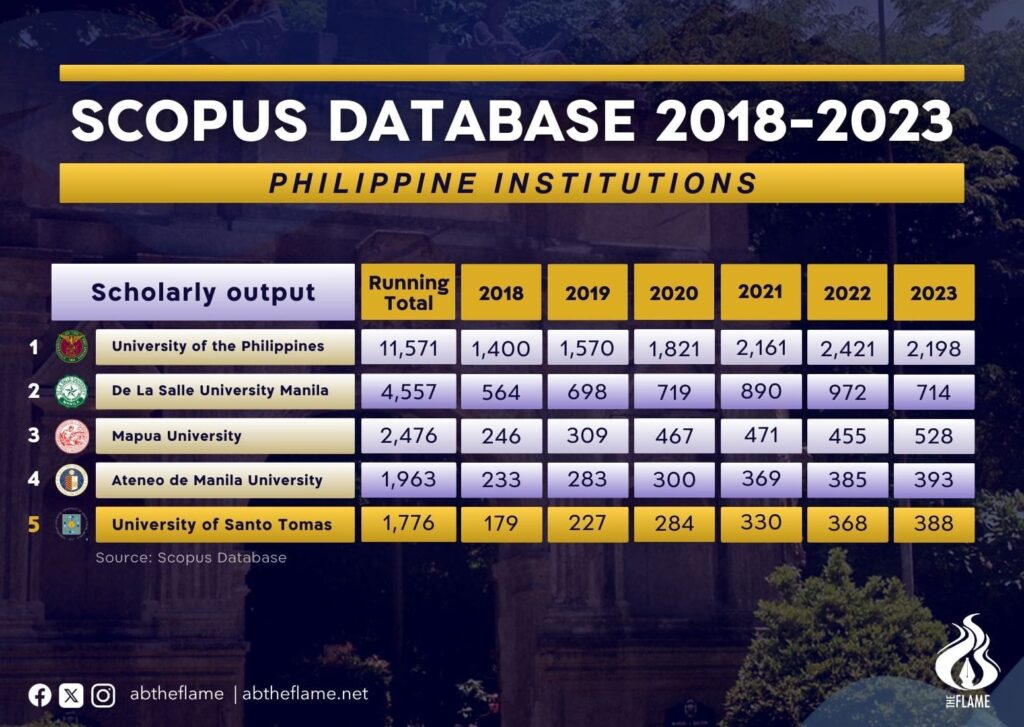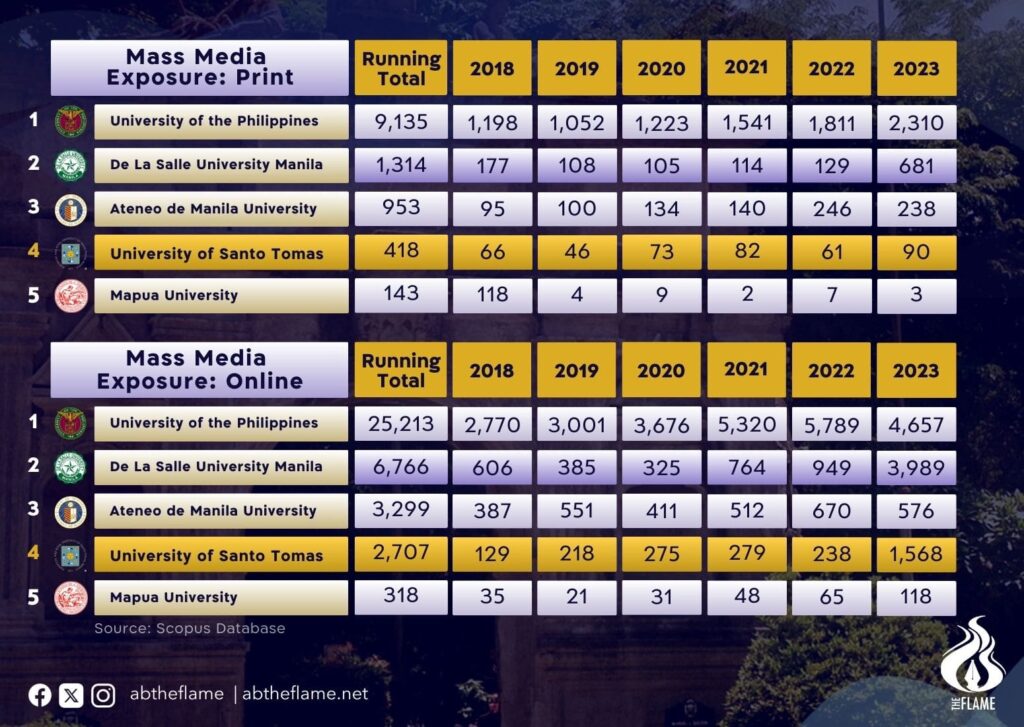
THE UNIVERSITY of Santo Tomas yielded the lowest number of research outputs among the five most productive Philippine universities in the field since 2018, data from the Scopus database showed.
Statistics from Scopus’ research analytics data SciVal showed that UST had the lowest research production at 1,776 from 2018 to 2023, placing last among the top five academic institutions in the country.
State-run University of the Philippines (UP) was the top-performing institution nationwide, producing a running total of 11,571 scholarly outputs. UST was also behind De La Salle University (4,557); Mapúa University (2,476); and Ateneo De Manila University (1,963).

According to the database, UST’s research output was largely driven by international collaborations, accounting for 856 or 48.2% of its research publications. A total of 377 (21.2%) of the University’s scholarly outputs were in collaboration with national authors, while 364 (20.5%) were with institutions. Only 179 (10.1%) outputs were single-authored.
In terms of publications by subject area, UST performed best in medicine with 620 scholarly outputs, followed by social sciences (304) and agricultural and biological sciences (279). It produced the least number of publications on veterinary (7) and economics, econometrics and finance (27).
Meanwhile, the University had the highest number of publications on “good health and well-being” among the 16 Sustainable Development Goals at 491. It underperformed in “no poverty,” with only 13 outputs.
The España-based university also garnered the lowest views on Scopus publications during the five-year period at 47,405, way below fourth placer Mapúa University, which had 95,439. UP topped the views count with a running total of 431,372.
UP also led the four institutions in terms of citation count at 140,543. Meanwhile, UST yielded the fourth-highest number of citations at 15,495.
The Dominican-run university’s top collaborators were UP and De La Salle University – Manila, with a total of 188 and 81 co-authored publications, respectively. Four of its top six collaborators were international institutions, namely, Chung Yuan Christian University (67); Mahidol University (64); University of Malaya (54); and National University of Singapore (51).
Second lowest in media exposure
The Elsevier-owned database also showed UST at the second lowest spot among the five most recognized Philippine schools in mass media.
The University earned a total of 418 mentions in print media from 2018 to 2023, just above Mapúa University at 143. The same rank goes with online media wherein UST gained 2,707 mentions, while Mapua only had 318.

Across geographical indicators, UST posted a 153.9 weight count in print media exposure, drawing a score of 8.0 for international; 76.5 for regional; 54.0 for national; and 15.4 in local recognition.
Meanwhile, the University had better exposure in online media as the third-most recognized institution, with a total weight of 744.8. It attained the highest recognition nationwide at 394.5, followed by local (245.0); international (70.0); and regional (32.0).
UP has the most print and online media exposure across all geographical indicators with a 2,797.6 and 7,655 total weight count, respectively.
Launched in 2004 by academic publisher Elsevier, Scopus is a scientific abstract and citation database that assesses peer-reviewed outputs and offers insights into the research performance of institutions, researchers and publications across the globe. F




[…] READ: UST last among five most research-productive PH schools in scholarly output […]